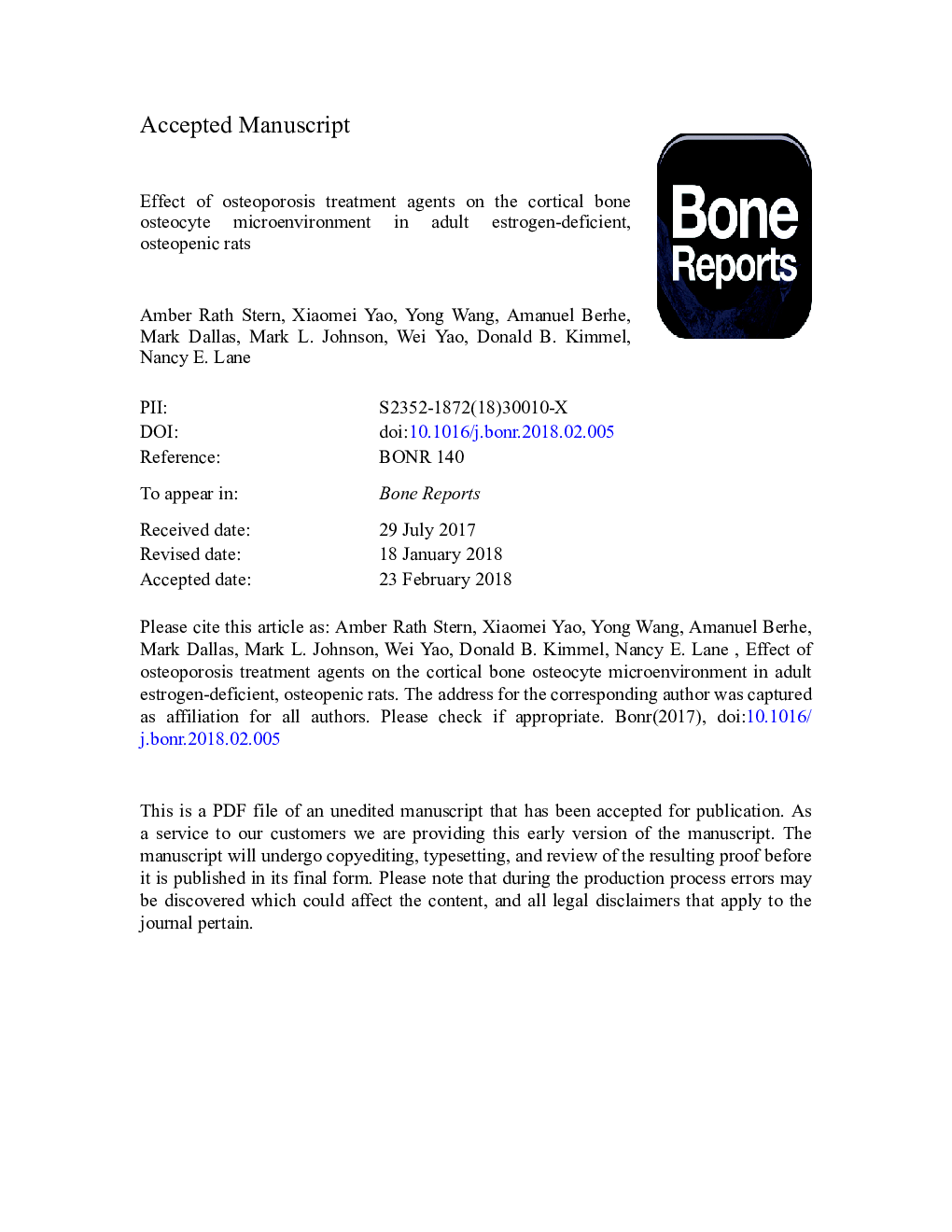| Article ID | Journal | Published Year | Pages | File Type |
|---|---|---|---|---|
| 8627609 | Bone Reports | 2018 | 38 Pages |
Abstract
Though osteoporosis is a significant cause of disability worldwide, treatment with pharmacologic agents decreases risk of fragility fracture. Though these treatments act through the bone remodeling system to improve bone mass, it is unclear if they alter the response of bone to mechanical loading at the level of the osteocyte. This pre-clinical study determined the relationship between microstructural bone tissue properties and osteocyte lacunar size and density to strain around osteocytes with standard osteoporosis treatment or sequential therapies. Six-month-old female ovariectomized (OVX) Sprague-Dawley rats were cycled through various sequences of pharmacological treatments [alendronate (Aln), raloxifene (Ral) and human parathyroid hormone-1,34 (PTH)] for three month intervals, over nine months. Linear nanoindentation mapping was used to determine Young's modulus in perilacunar and bone matrix regions around cortical bone osteocyte lacunae. Measurements of lacunar diameter and density were completed. Treatment-related differences in Young's modulus in the perilacunar and bone matrix regions were not observed. We confirmed previous data that showed that the bone matrix region was stiffer than the perilacunar matrix region. Whole bone material properties were correlated to perilacunar matrix stiffness. Finite element models predicted a range of mechanical strain amplification factors estimated at the osteocyte across treatment groups. In summary, though the perilacunar matrix near cortical osteocyte lacuna is not as stiff as bone matrix further away, osteoporosis treatment agents do not affect the stiffness of bone tissue near osteocyte lacunae.
Keywords
Related Topics
Life Sciences
Biochemistry, Genetics and Molecular Biology
Endocrinology
Authors
Amber Rath Stern, Xiaomei Yao, Yong Wang, Amanuel Berhe, Mark Dallas, Mark L. Johnson, Wei Yao, Donald B. Kimmel, Nancy E. Lane,
